Ants

Ask About Our
100% Eco-Friendly
Options

Ant Control Services In Central Wisconsin
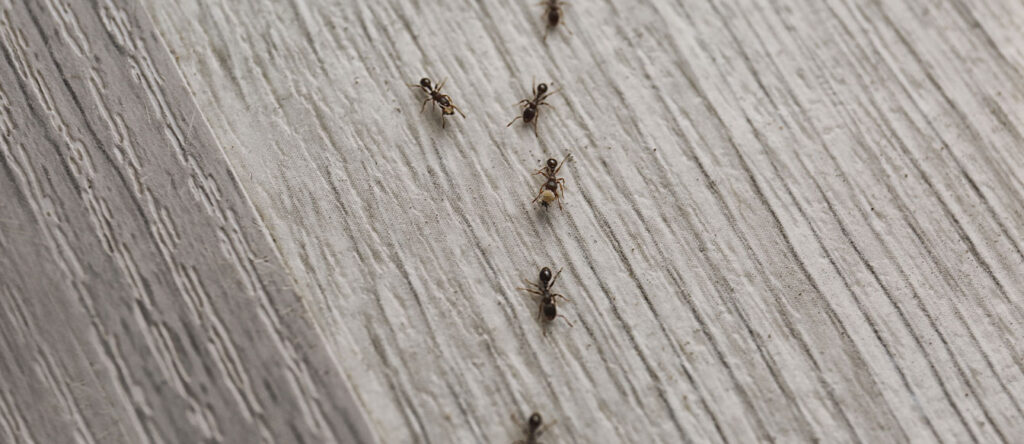
Ants are one of the most common pests both homeowners and renters encounter, leaving most to wonder how to get rid of ants. These tiny pests can be found both indoors and outside and will survive where they find food and water sources. Ant treatment must include proper sanitation in addition to an actual pesticide treatment using a combination of professional grade outdoor and indoor ant sprays and ant baits.
There are many different species of ants, and identifying the species you are dealing with is very important when coming up with your treatment plan. Sanitation means more than cleaning up food that has been left out or sweeping up certain areas. In terms of ant control, sanitation means changing or removing the things ants need to live.
All pests, including ants, need three main things to exist on your property:
- Food
- Water or sufficient moisture
- Shelter
Pests seek these things when looking for a place to live, and by removing or limiting one or more of these aspects, you will help make your property less attractive to pests.
Sanitation
- To prevent ants from using trees and foliage to reach your home and gain access to it, trim back trees and shrubs so that the branches and foliage do not touch your home. This will also help avoid the need for pesticide applications.
- Eliminate moist, shady areas where ants like to nest by trimming bushes and shrubs up from the ground so you can see beneath them.
- Create a “dry zone” – an area devoid of any landscape material – that ants are likely to avoid by raking mulch, pine straw or other landscape bedding at least 6 inches from the foundation. Stone will help keep area dryer than mulch.
- Insects and other household pests are known to live in gutters and downspouts, so clean these out frequently.
- Keep your lawn short, mowing as often as necessary.
- To eliminate potential harborages for a wide variety of insects and pests, remove grass clippings, leaf piles, stacked wood, and other lawn debris.
- If fruit trees are on the property, pick fruit from trees when ripe and pick up fallen fruit from the ground.
- Outdoor trash cans and dumpsters provide food and shelter for pests, so store them as far away from structures as possible and check for tight fitting lids.
- Wash out trash cans and dumpsters with an ammonia solution when needed.
Frequently Asked Questions
Common types of ants found in homes include odorous house ants, pavement ants, and carpenter ants.
Signs of an ant infestation may include seeing ants crawling in or around your home, finding ant trails or mounds outside, and finding small piles of dirt or sawdust near wooden structures
Effective ant treatments may include using bait traps, insecticide sprays or dusts, and sealing cracks and gaps in walls and floors to prevent ants from entering your home. It’s best to consult with a pest control professional for the most effective treatment plan.
To prevent ants from entering your home, seal any cracks or gaps in walls or floors, keep food and crumbs off of counters and floors, and eliminate sources of standing water.
Types of Ants
There are many different species of ants that come in a variety of shapes and sizes. Some of the most common ants in Central Wisconsin are:
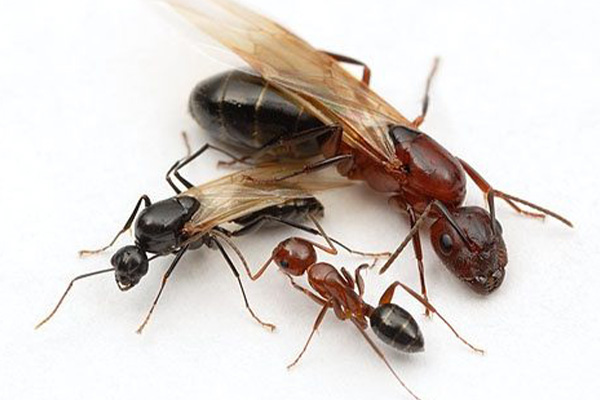
Carpenter Ant
The Black carpenter ants are known to forage up to 100 yards in search of food. Workers are most active at night, traveling from their nest to a food source following trails. The ants produce crackling sounds that can often be heard near a large nest. A large colony can have thousands of individuals. The black carpenter ant does not sting, but the larger workers can administer a sharp bite, which can become further irritated by the injection of formic acid. In their natural environment, carpenter ants nest in dead trees and other deadwood. This enhances decay, which has ecological benefits. However, the ant achieves pest status when a colony invades the wood of a house or other structure, damaging its structural integrity.
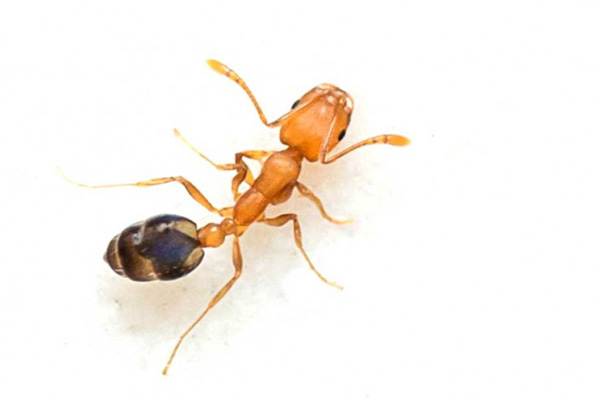
Pharoah Ant
Pharaoh workers are about 1/16-inch, or 2.0 millimeters, in length. They are light yellow to reddish-brown in color with a darker abdomen. Pharaoh ant workers have a non-functional stinger used to generate pheromones. The petiole (narrow waist between the thorax and abdomen) has two nodes and the thorax has no spines. Pharaoh ant eyesight is poor and they possess on average 32 ommatidia. The antennal segments end in a distinct club with three progressively longer segments. This ant can be found almost anywhere in the world. It is a major pest in the United States, Australia, and Europe.
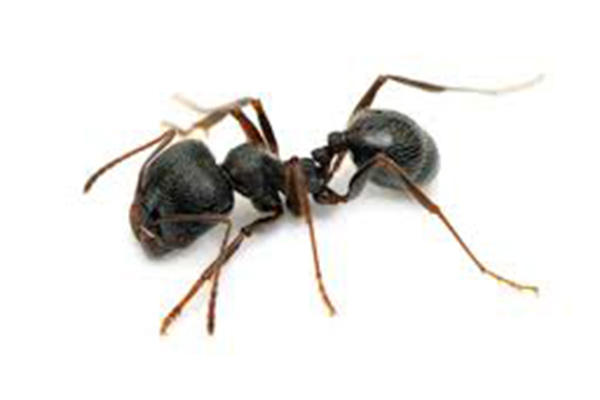
Pavement Ant
The pavement ant, Tetramorium caespitum is an ant native to Europe, which also occurs as an introduced pest in North America. Its common name comes from the fact that colonies in North America usually make their homes in the pavement. It is distinguished by one pair of spines on the back, two nodes on the petiole, and grooves on the head and thorax. During early spring, colonies attempt to conquer new areas and often attack nearby enemy colonies. These result in huge sidewalk battles, sometimes leaving thousands of ants dead. Because of their aggressive nature, they often invade and colonize seemingly impenetrable areas outside their native range. In summer, the ants dig out the sand in between the pavements to vent the nests.
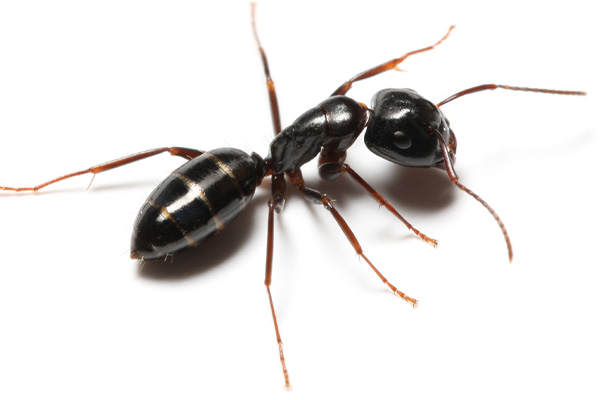
Odorous Ant
The Odorous House Ant (Tapinoma sessile) is a native species, found throughout the United States. It earns its name by producing a foul, "rotten coconut" odor when crushed. They are often confused with the pavement ants, but has only 1 node. They forage day and night The nests can occur in a great variety of situations. Inside, these Ants usually construct their nests in wall voids, especially around hot water pipes and heaters, in crevices, sinks, cupboards, etc. Outside they are found in exposed soil, usually shallow, often located beneath a board, brick, stone walk, etc. They are most likely to enter buildings when their honeydew supply or sweet supply of food is reduced by natural occurrences such as rainy weather or autumn leaf fall.
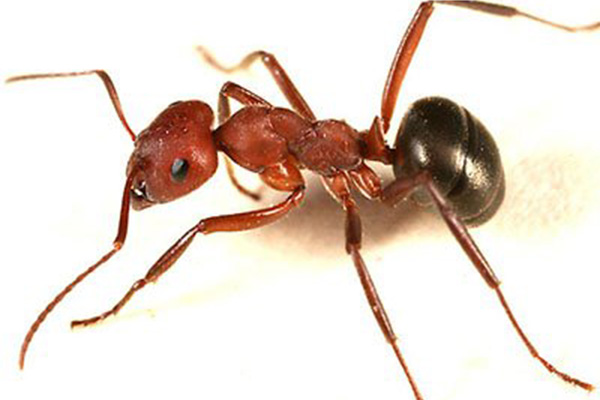


 Service Request
Service Request